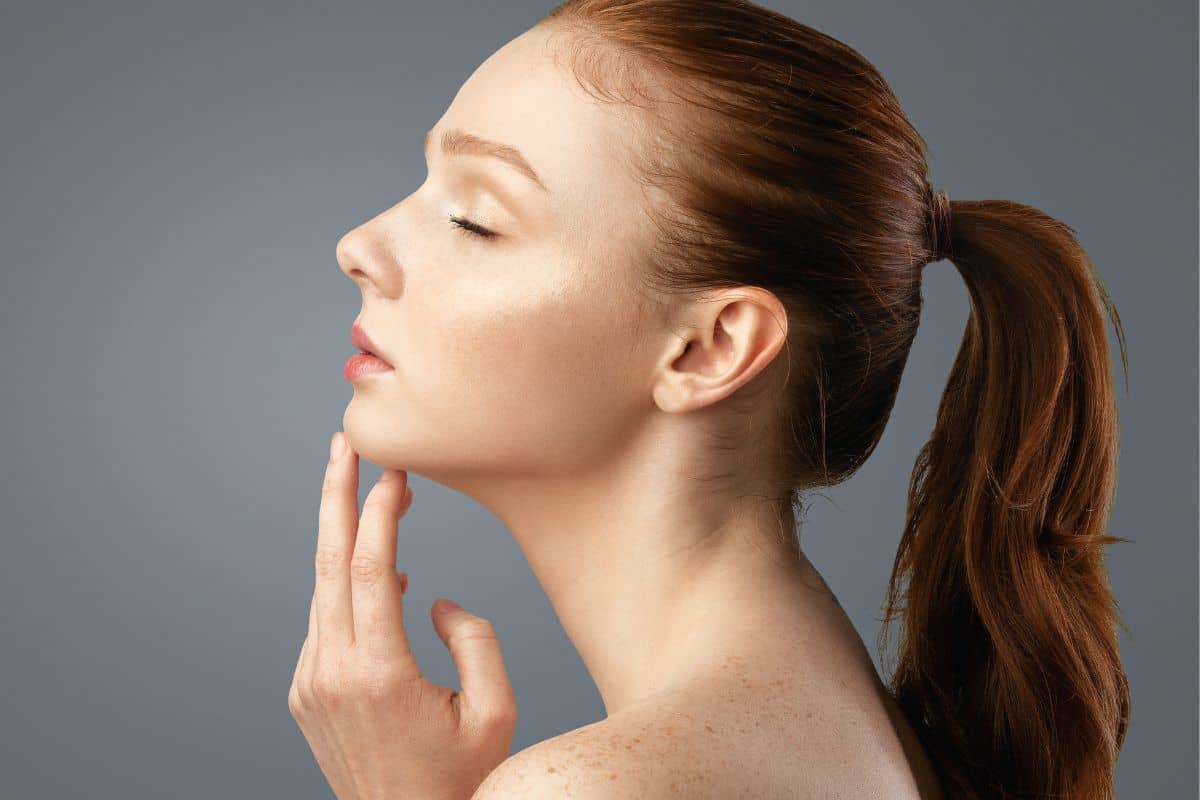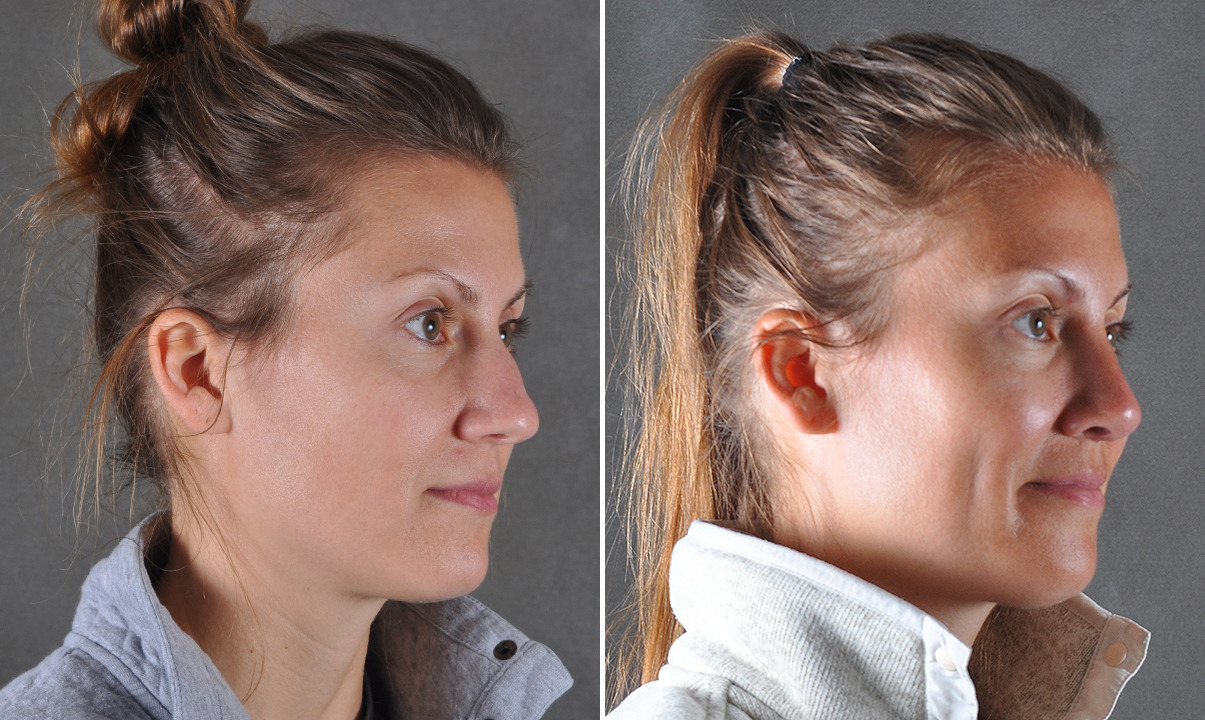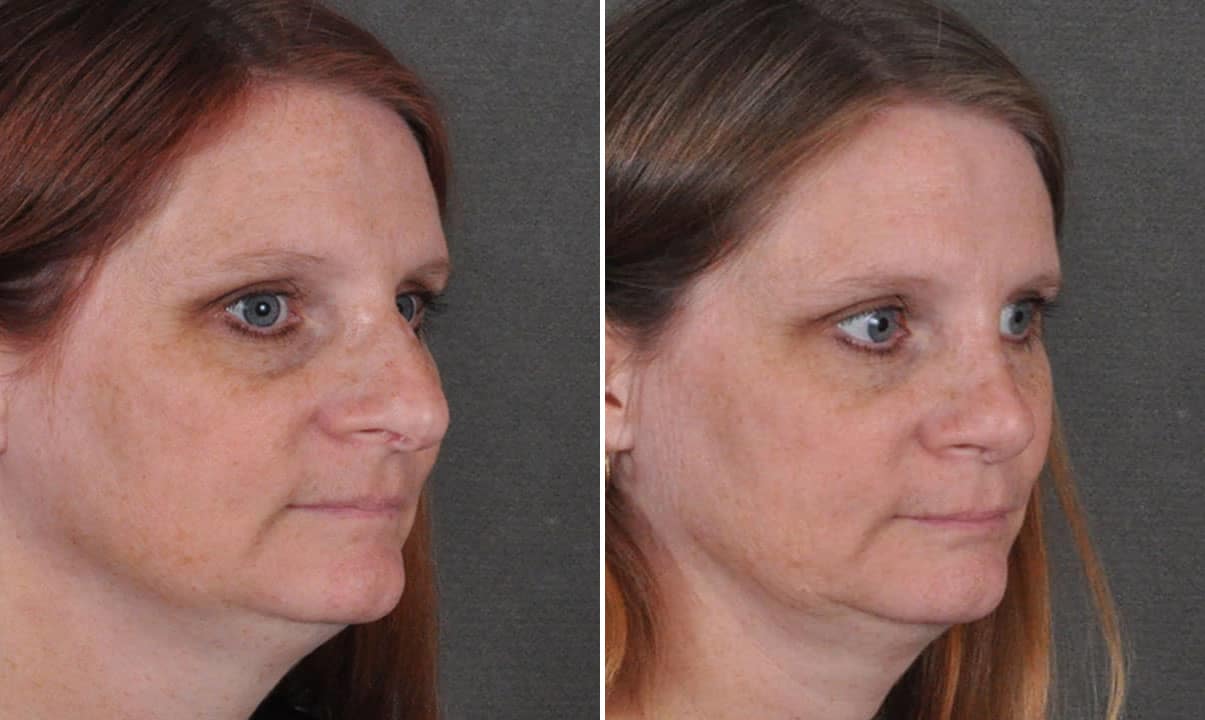If you’ve been researching ways to improve your nasal function or appearance, you’ve likely come across two popular procedures: septoplasty vs rhinoplasty. These surgical approaches can sometimes address similar issues, such as a rhinoplasty for deviated septum, but they differ in their primary goals and techniques. At Aesthetic Surgical Images, our board-certified plastic surgeons specialize in customizing these procedures to match each patient’s unique concerns, ensuring optimal results. Below, we’ll explain how septoplasty and rhinoplasty differ, how each surgery is performed, and how to decide which one is right for you.

A Quick Look at Septoplasty vs Rhinoplasty
- Septoplasty and rhinoplasty serve different purposes—one focuses on improving breathing, the other on enhancing appearance.
- Both procedures involve reshaping the nose, but septoplasty addresses functional issues while rhinoplasty addresses cosmetic concerns.
- Recovery times can vary based on the complexity of each procedure, but proper aftercare is crucial for both.
- Combining both surgeries can tackle functional and cosmetic issues at once.
- Aesthetic Surgical Images offers expert care from board-certified plastic surgeons, including Dr. Bruneteau and Dr. Montag, ensuring you receive personalized treatment.
What is Rhinoplasty?
Rhinoplasty, often referred to as a nose job, is a surgical procedure designed to reshape the nose for cosmetic or functional reasons. It involves altering the nasal structure by modifying the cartilage and bone beneath the skin. This allows surgeons to adjust the nose’s size, shape, and proportions so it harmonizes with the rest of your facial features.
Rhinoplasty Surgery
Rhinoplasty surgery can be performed using either an open or closed technique. In an open rhinoplasty, the surgeon makes an incision across the columella (the narrow strip of skin between the nostrils). A closed rhinoplasty keeps all incisions inside the nostrils. The choice largely depends on the patient’s needs and the surgeon’s recommendation. By carefully reshaping nasal bones and cartilage, our facial plastic surgeons can address issues like a prominent hump, wide nostrils, or a lack of definition in the nasal tip.
Rhinoplasty Addresses
- Cosmetic concerns: size, shape, tip, bridge, or nostril flaring
- Functional elements: correcting breathing issues by adjusting the nasal passages
- Nasal symmetry: improving overall facial balance
Rhinoplasty Recovery
Rhinoplasty recovery usually involves wearing nasal splints or a supportive device for about a week to maintain the new shape. Patients are advised to avoid strenuous activities, heavy lifting, and contact sports for a few weeks. Swelling and bruising around the nose and eyes are common but generally subside within two weeks, with residual swelling gradually decreasing over several months.
What is Septoplasty?
Septoplasty is a nasal surgery that focuses on correcting a deviated septum. The septum is the wall of cartilage and bone separating the two nasal cavities. When it’s crooked or misaligned, it can cause nasal congestion, difficulty breathing, and other functional issues. Unlike rhinoplasty, which often targets external cosmetic goals, septoplasty aims to restore normal airflow through the nasal passages.
Septoplasty Surgery
Septoplasty surgery typically involves making small incisions inside the nose. The surgeon carefully repositions or removes parts of the cartilage and bone that cause the nasal blockage. Because the procedure is usually confined to the inside of the nose, external scarring is minimal or nonexistent.
Septoplasty Addresses
- Breathing problems: caused by a crooked or deviated septum
- Nasal blockage: obstructions leading to frequent congestion and sleep disturbances
- Structural issues: correcting the internal alignment of the nose
Septoplasty Recovery
During septoplasty recovery, patients may require nasal splints or packing to support the healing tissues and maintain proper alignment. You can expect mild discomfort, swelling, and possibly nasal congestion for the first week. Most people can return to work or normal routines within a week, but any strenuous activity should be avoided for a couple of weeks.
Rhinoplasty Before and After Photos


* Each patient is unique and individual results may vary.
Key Differences Between Septoplasty and Rhinoplasty
While septoplasty and rhinoplasty may sound similar, they address different concerns. Understanding their nuances can guide you toward the procedure that suits your needs.
Purpose
Rhinoplasty often focuses on enhancing the external shape, size, and appearance of the nose. It can also address minor breathing issues.
Septoplasty primarily corrects a deviated septum to improve breathing function.
Benefits
Rhinoplasty enhances facial balance and boosts self-confidence, can correct slight breathing issues, and refines your overall nasal structure.
Septoplasty improves airflow, alleviates chronic congestion, may reduce snoring or sleep apnea symptoms, and corrects internal misalignment.
Procedural Techniques
Rhinoplasty can be open or closed, using external incisions (open) or internal incisions (closed), and reshapes the cartilage and bone.
Septoplasty typically uses internal incisions with minimal or no external scarring, focusing on straightening the nasal septum.
Recovery
Rhinoplasty recovery usually involves 1-2 weeks of visible bruising and swelling, with final results emerging over several months.
Septoplasty recovery includes some swelling and a one-week period of downtime, with fewer visible signs of surgery.
Side Effects and Risks
Rhinoplasty recovery usually involves 1-2 weeks of visible bruising and swelling, with final results emerging over several months.
Septoplasty recovery includes some swelling and a one-week period of downtime, with fewer visible signs of surgery.
TAKE THE FIRST STEP
Let’s determine together which nose surgery suits your needs. Contact Aesthetic Surgical Images for a personalized assessment.
Which Procedure is Right for You?
Choosing between rhinoplasty and septoplasty can be confusing, especially if you’re dealing with both functional and cosmetic concerns. The best way to determine the right course of action is to consult a qualified surgeon. Our team at Aesthetic Surgical Images offers in-depth consultations to assess your unique nasal structure and discuss your goals. During your consultation, a board-certified plastic surgeon will review your medical history, perform a thorough examination, and recommend the most appropriate surgical procedure.
Factors to Consider
Before deciding on any surgery, it’s essential to evaluate how each option aligns with your functional needs and aesthetic goals. When you come in for your consultation, expect an open and honest conversation with our specialists. We encourage you to ask questions, voice concerns, and share your desired outcomes.

Here are a few important factors to keep in mind:
- Functional goals: Are you primarily looking to improve breathing? If so, septoplasty could be your main focus.
- Cosmetic goals: If reshaping the external look of the nose is a priority, rhinoplasty is likely the answer.
- Overall health: Good physical health and realistic expectations improve your chances of a smooth recovery and satisfying results.
- Surgeon’s expertise: Ensure your chosen facial plastic surgeon is board-certified and has experience in both rhinoplasty and septoplasty.
- Recovery time: Each procedure has unique downtime and aftercare requirements, so be sure to plan accordingly.
Combined Approach for Comprehensive Results
Many patients have both functional and cosmetic needs. For instance, a rhinoplasty for cosmetic purposes might be combined with septoplasty for a deviated septum to optimize breathing while refining the external nose. This combined approach is often called a septorhinoplasty. By addressing both internal obstructions and external shape in a single surgery, you can reduce overall recovery time and avoid multiple procedures.
Why Choose Aesthetic Surgical Images?
At Aesthetic Surgical Images, we pride ourselves on delivering exceptional patient care under the guidance of our board-certified plastic surgeons. Our team includes experts like Dr. Bruneteau and Dr. Montag, both of whom have extensive experience in nasal surgery procedures. Whether you need septoplasty to correct breathing problems or a more comprehensive rhinoplasty to refine your nose, our practice is equipped with state-of-the-art facilities and an experienced medical team.
Here’s what sets us apart:
- Expertise: We have performed countless surgical procedures for the nose, restoring patients’ breathing and self-confidence.
- Advanced techniques: Our surgeons keep abreast of the latest medical advancements in rhinoplasty and septoplasty.
- Personalized care: From the first call to your final follow-up, you’ll receive attention tailored to your needs and concerns.
- Comfortable setting: Our modern, fully accredited surgical center ensures your comfort, safety, and privacy.
Consult with a Nose Specialist
If you’re still weighing the pros and cons of septoplasty vs rhinoplasty, or if you suspect you may benefit from a septorhinoplasty, we encourage you to reach out to Aesthetic Surgical Images. Our team will help you explore your options, answer your questions, and customize a treatment plan for optimal outcomes. A properly performed nose surgery can significantly enhance your facial harmony, boost self-confidence, and help you breathe more easily.
When you’re ready to move forward, contact our office to schedule a personalized consultation with one of our nose specialists. We’ll discuss everything from risks and complications to payment options, ensuring you’re fully informed before making a decision. Let us help you achieve the functional and cosmetic benefits you deserve.
FAQs about Rhinoplasty and Septoplasty
Most surgeons recommend waiting until nasal growth is complete, typically around age 15-16 for girls and 16-17 for boys. However, each case is unique, and adult patients of any age may be considered if they’re in good overall health.
Yes. Combining the two into a single procedure, known as septorhinoplasty, can address both functional and cosmetic concerns, reducing the total recovery period.
Before your consultation, compile any relevant medical records and note your primary concerns and desired outcomes. Arrive with specific questions or worries so our team can provide detailed guidance during your visit.
